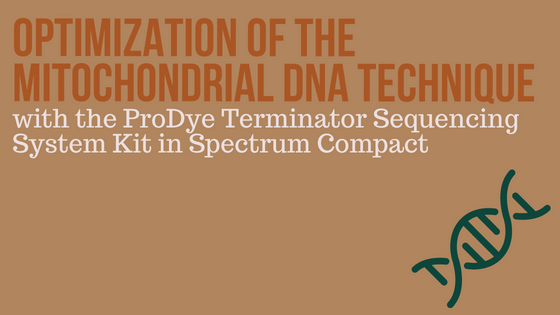Today’s guest blog is written by Erika Ramírez, Lorgen Mexico
In Mexico, there is a serious problem of missing persons, clandestine graves, etc. Among the conditions in which the samples have been found are: calcined, with acids, with cement, in wastewater, etc. coupled with weather conditions. In addition, the remains are fragmented and mixed together, so each and every one of them must be analyzed.
In many cases it is not possible to obtain a genetic profile that is sufficient to carry out a confrontation, so it is necessary to resort to other technologies to complement the identification.
Our laboratory in Mexico City is dedicated to the assembly of paternity samples and forensic samples, especially human remains. We have processed several thousands of bone remains, and we have not obtained autosomal results for a portion of them, so we wanted to implement new technology. While we first thought of NGS, we decided on Mitochondrial due to the high cost of processing NGS samples.
Due to the fact that the market is absorbed by the BigDye kit of the Applied Biosystems brand, it was decided to optimize the ProDye kit, in order to have other alternatives. It was also decided to test new purification methods and new equipment such as the Spectrum Compact.
We also wanted to verify that the mitochondrial DNA technique is functional for those samples where we cannot obtain genetic profiles. Lorgen Mexico Laboratory and Zogbi Commercial Distributor were key collaborators in this study.
Upon completion of the study, we determined it was possible to successfully standardize the technique for the analysis of Mitochondrial DNA, for forensic use, through the use of the ProDye Terminator Sequencing System kit, using the Spectrum Compact genetic analyzer. The mtDNA analysis is a tool that can be useful to complement human identification studies, especially in those difficult samples (degraded, with a low amount of DNA, etc.)
This study will have an impact for us in terms of alternatives. At first, we started working with the BigDye kit, but it was somewhat confusing in certain techniques, in addition to the fact that it could not be analyzed in all software. As for specialists in Mexico, since we have optimized the technique, we can go on site or train them one by one so that they can do it. Previously it was thought that the technique was very expensive and very difficult, but this was because there was no technical support in the country.
By having the technical support specialists with us, we can show that the technique is not as complicated as previously thought and that it is within everyone’s reach in terms of costs. Next is to implement NGS, and X Chromosome.
WOULD YOU LIKE TO SEE MORE ARTICLES LIKE THIS? SUBSCRIBE TO THE ISHI BLOG BELOW!
SUBSCRIBE NOW!


